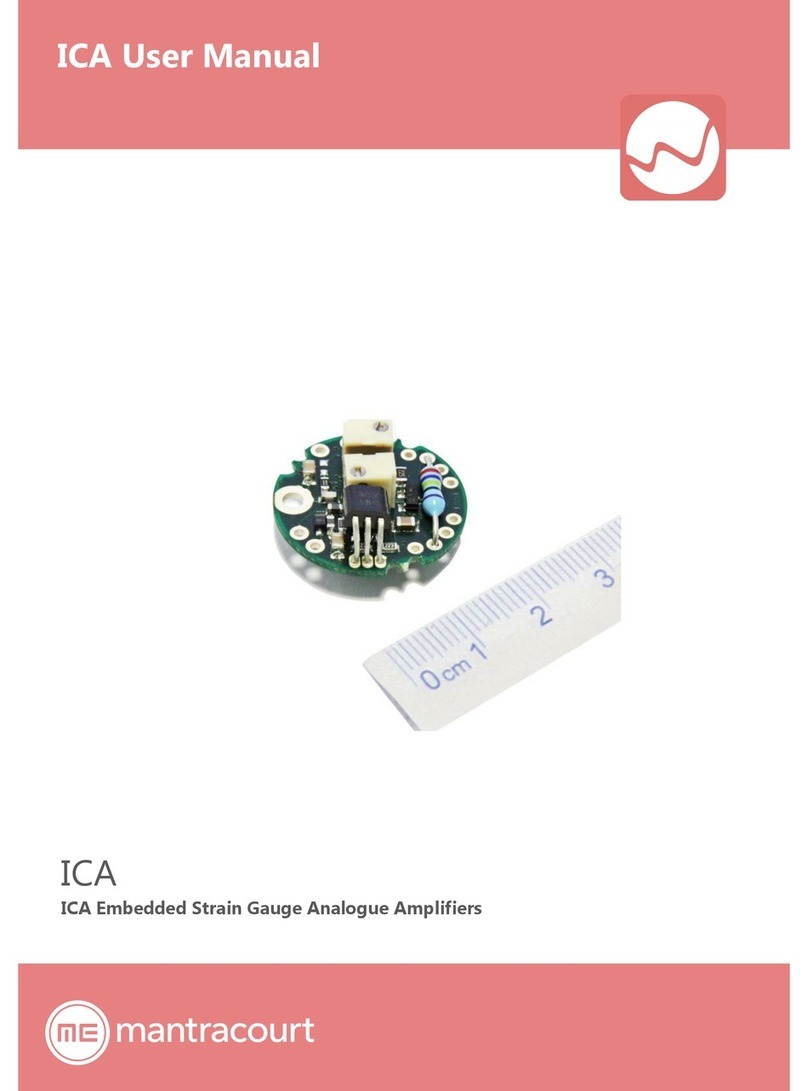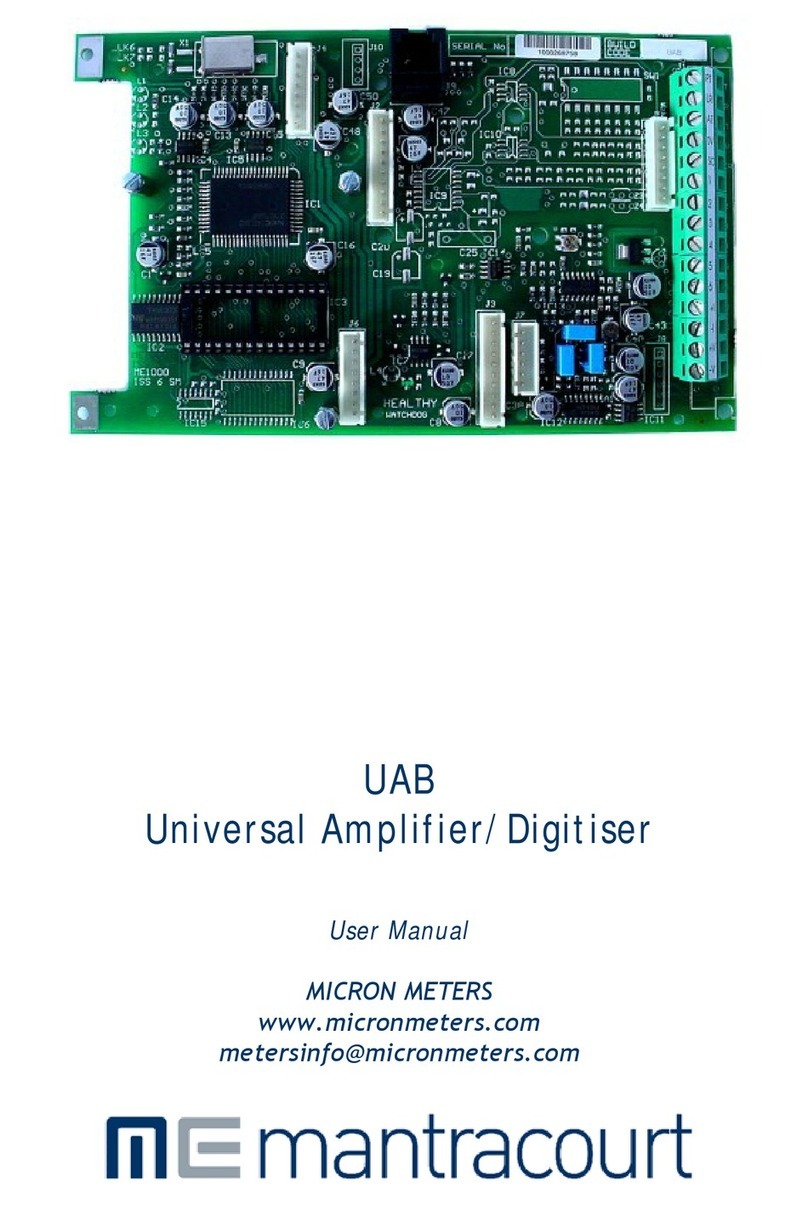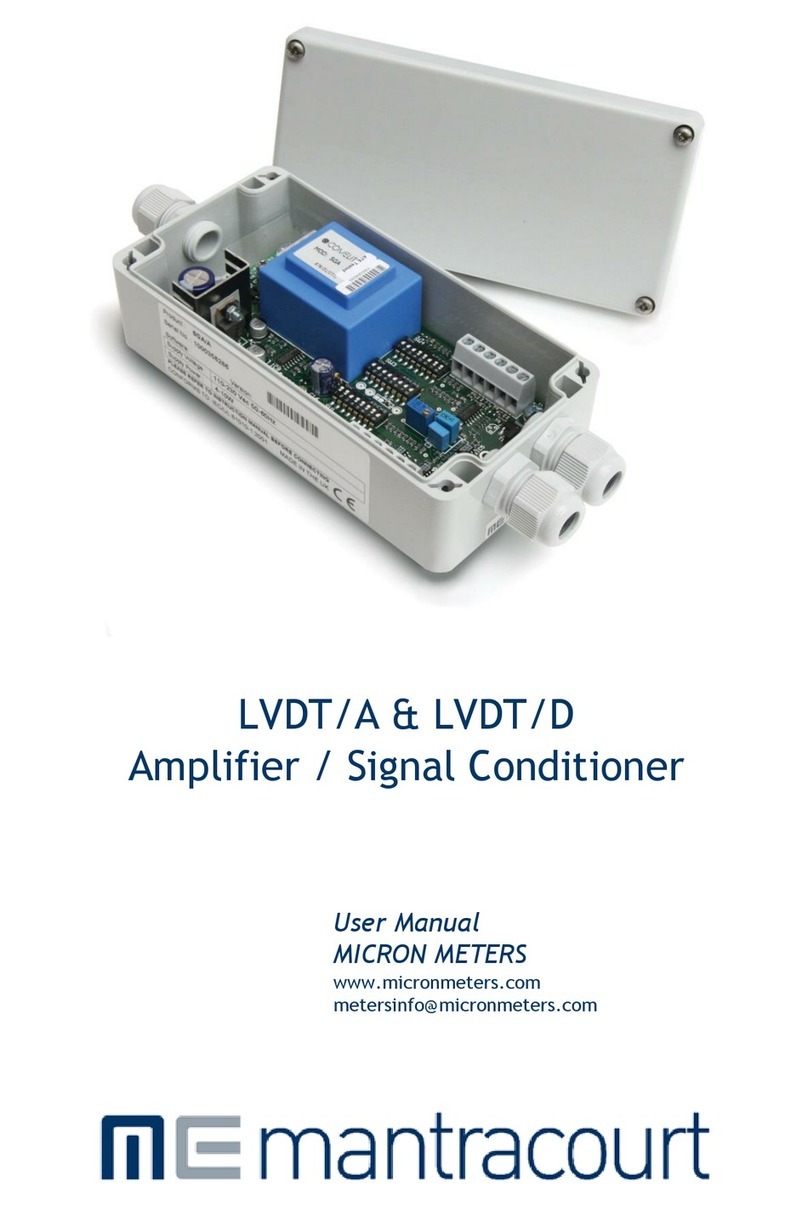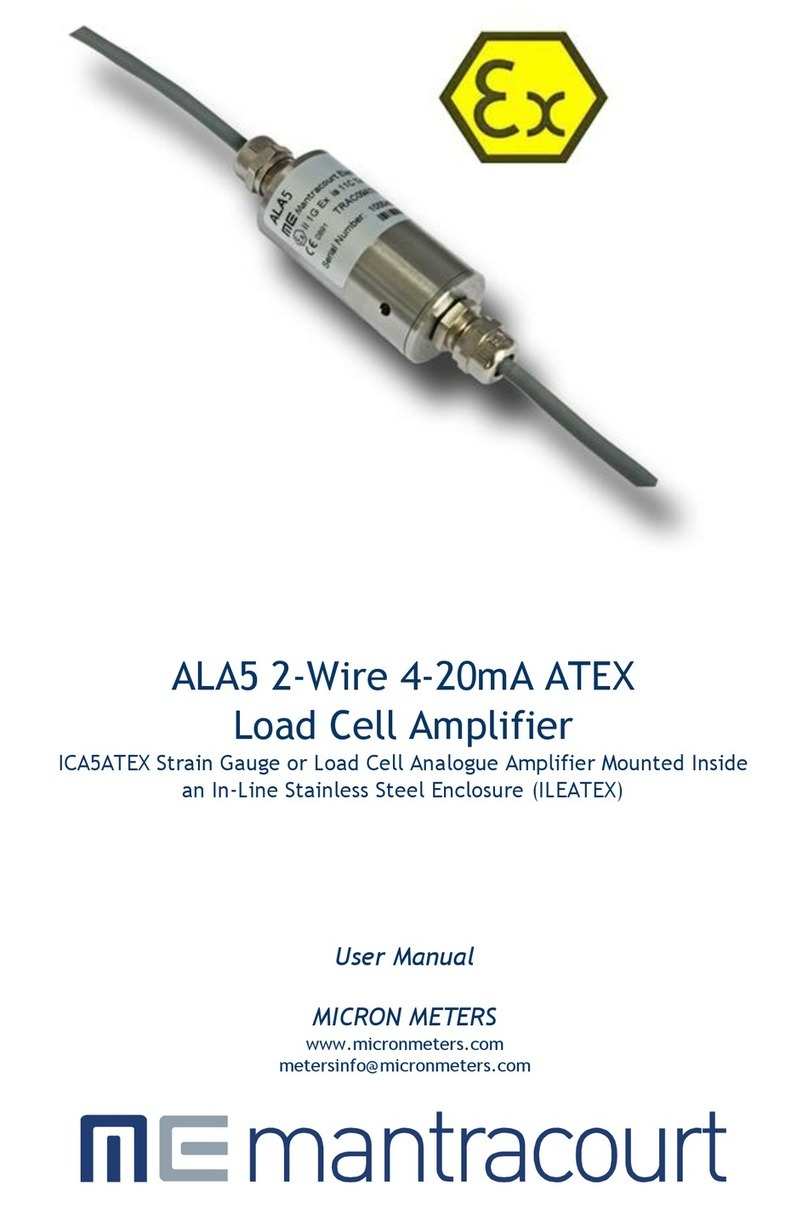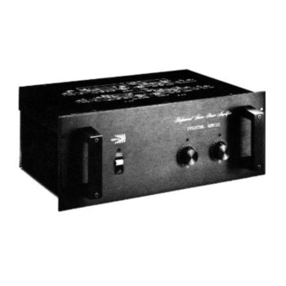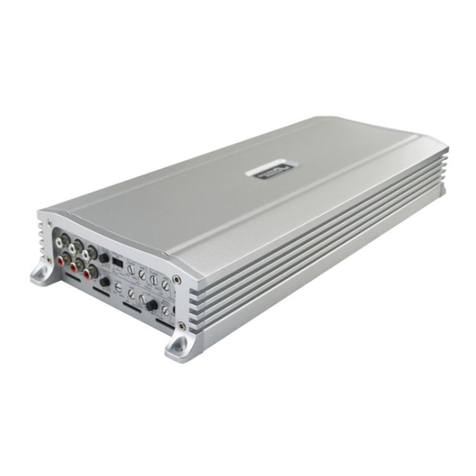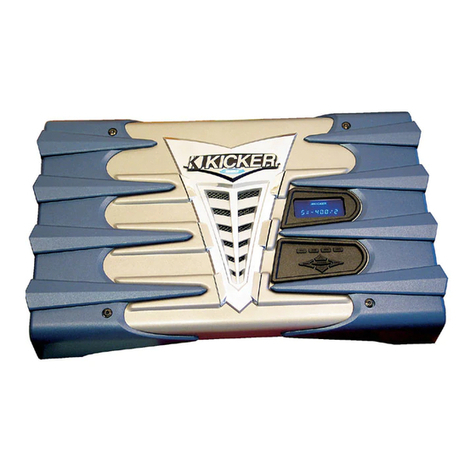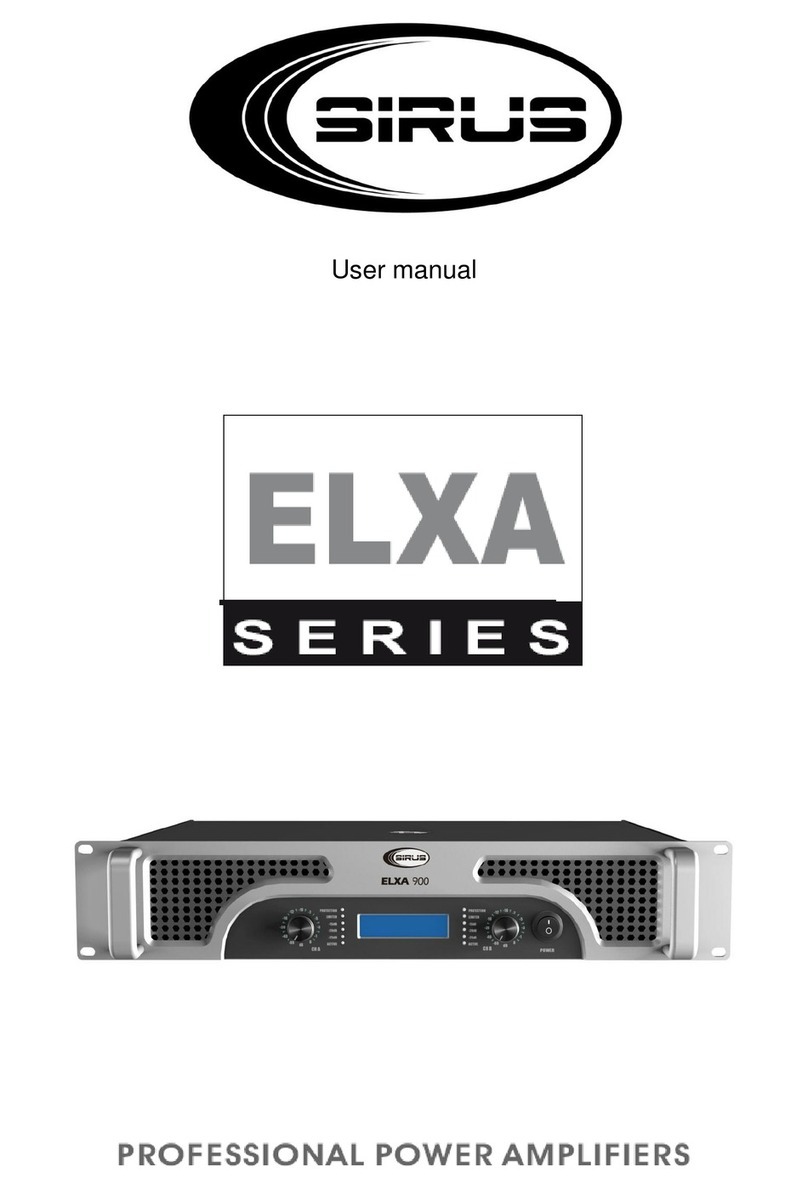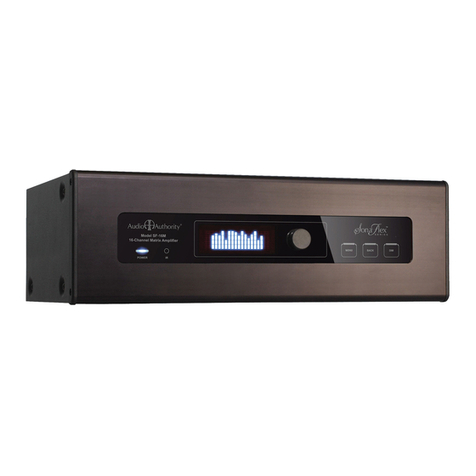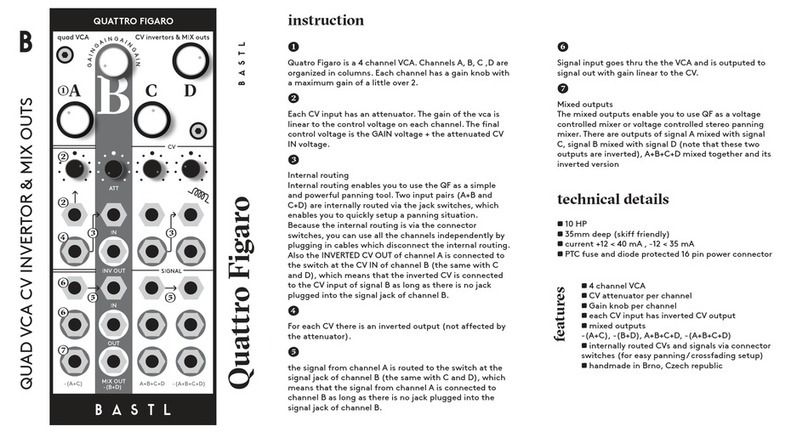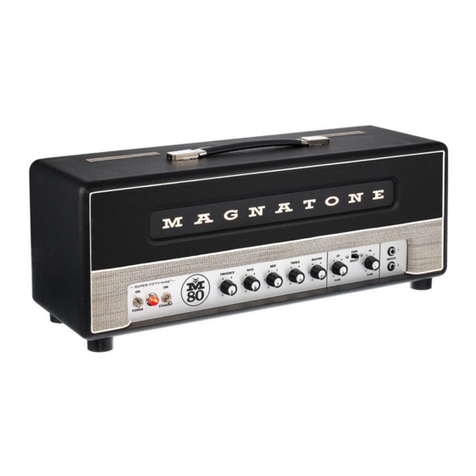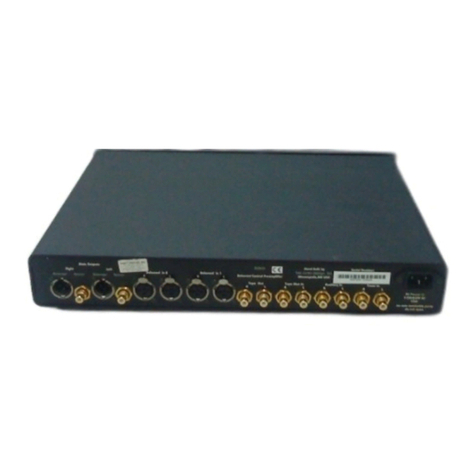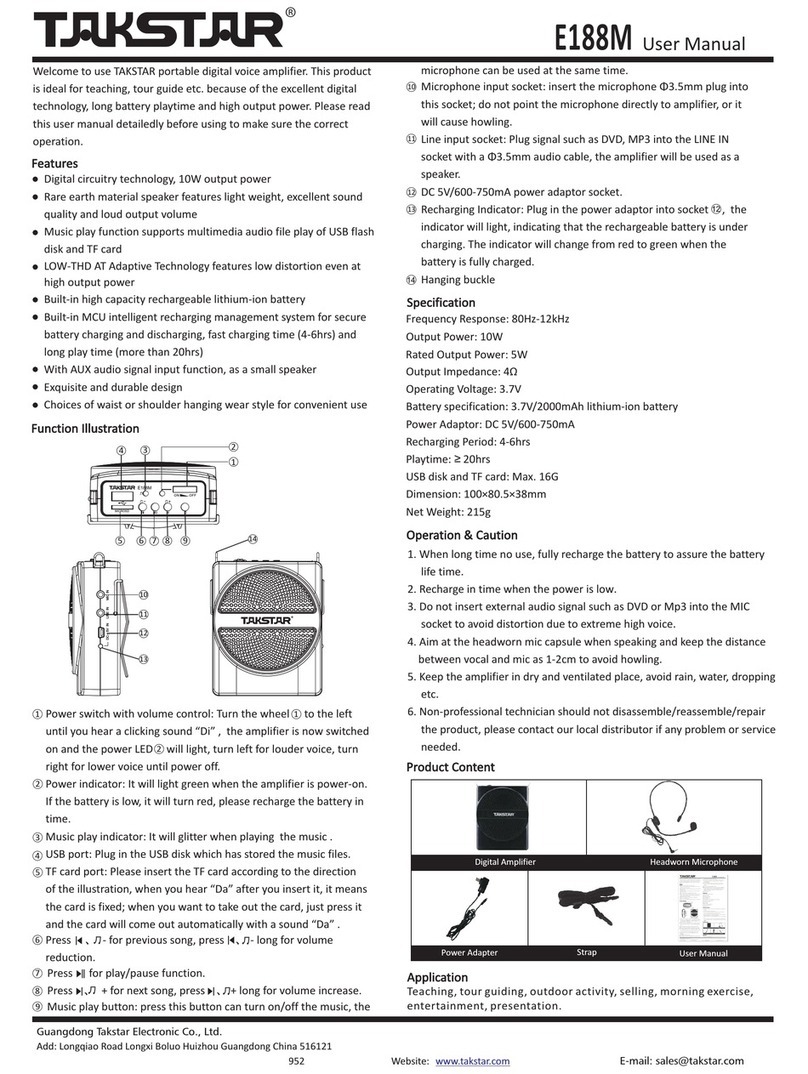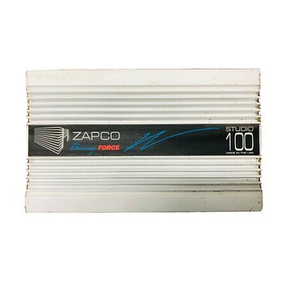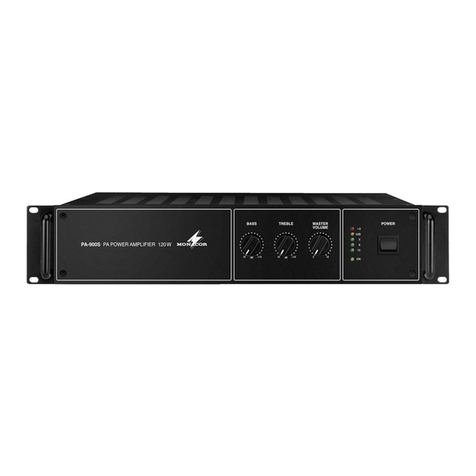Mantracourt ICA3 User manual

ICA3
ICA6
ICA3 & ICA6S and H Versions
Strain Gauge or Load Cell Embedded
Analogue Amplifier
User Manual
mantracourt.com

Mantracourt Electronics Limited ICA3 & 6 S and H Versions User Manual
1
ICA3 & ICA6 S and H Versions Manual
Contents
Contents.................................................................................................................................... 1
Introduction to the ICAS and ICAH Range of In-Cell Amplifiers................................................................ 2
Chapter 1 The ICAS and H Range..................................................................................................... 3
Figure 1.1 Block Diagram................................................................................................................ 3
The ICA6.................................................................................................................................... 3
Chapter 2 Installing the ICA3 and ICA6 S and H................................................................................... 4
Pre Installation............................................................................................................................ 4
Figure 2.1 Dimensions ................................................................................................................... 4
Power Connections ....................................................................................................................... 5
Figure 2.2 Connection Details for the ICA3 .......................................................................................... 5
Figure 2.3 Connection Details for the ICA6 .......................................................................................... 5
Figure 2.4 Connection Details for Best EMC Immunity ............................................................................. 5
Table 2.1................................................................................................................................... 6
Output Connections ...................................................................................................................... 6
Chapter 3: Calculating the gain resistor value .................................................................................... 7
Table 3.1 ICA3 and ICA6 (±10 Volts)................................................................................................... 7
Chapter 4 Calibration................................................................................................................... 8
Figure 4.1 Connection Details for Calibration....................................................................................... 8
Chapter 5 The ILE Enclosure .......................................................................................................... 8
Chapter 6 Trouble Shooting ........................................................................................................... 9
Chapter 7 Product Care ...............................................................................................................10
Chapter 8 Glossary .....................................................................................................................11
Chapter 9 Specifications for the ICA3 Load Cell Amplifier ....................................................................13
Table 8.1 ICA3S and ICA3H (±10V)....................................................................................................13
Electrical and Environmental.......................................................................................................... 13
Measurement ............................................................................................................................. 13
Specifications for the ICA6 Load Cell Amplifier..................................................................................14
Table 9.1 ICA6S and ICA6H (±10V)....................................................................................................14
Electrical and Environmental.......................................................................................................... 14
Measurement ............................................................................................................................. 14
CE Approvals.............................................................................................................................. 14
Other Mantracourt Products..........................................................................................................15

Mantracourt Electronics Limited ICA3 & 6 S and H Versions User Manual
2
Introduction to the ICAS and ICAH Range of In-Cell Amplifiers
Two new families, the ICAS (industrial stability) and ICAH (high stability) have been introduced into the Mantracourt
range of In-Cell Amplifiers. They offer improved performance and easier installation over the original designs.
The following points detail the main changes:
•The ICA1 and ICA2 output ranges have been changed to cover 0.1V to 10.1V and 0.1V to 5.1V respectively to
facilitate calibration and interpretation of the output level.
The linearity has been improved at the lower end of the scale (down to 70mV output).
•Excitation is standardised at 5V DC on the ICA1,2,3,4 and 6.
•The performance of the ICA family has been much improved over the operating temperature range by using
high performance, auto-zero amplifiers and low drift resistors.
The standard (‘S’) versions give a 200% improvement compared to the earlier versions.
The high performance (‘H’) versions are fitted with higher-specification resistors to offer a 400%
improvement over the earlier versions.
•The user-selectable span resistor is mounted via two standard plated through holes in the printed circuit
board making it easier to change if required.
There is also provision for a second resistor (not normally fitted) to give an offset zero if required for
example, 5.1V ±5V for an ICA1.
•All wire connections are via plated through holes instead of the single-sided pads used in the original design.
This allows all wires to enter from either side of the board resulting easier installation and improved joint
reliability.
•Multi-layer printed circuit boards and additional filtering has been added to further improve the EMC
performance.
•Faster and easier mounting/installation: The mounting hole size and position has been standardised on all
models and also provides the capacitive-coupling connection to the sensor body which further improves the
EMC performance.
The hole will accommodate a 2mm (#0-80) screw with adequate clearance for the head.
As this mounting method is compatible with our range of ‘D-Cell’ products, a single pocket design will
accept either digital or analogue conditioners.
•An ATEX (Intrinsic Safety) certified version of the ICA5 has been introduced.
•All variants are RoHS compliant.
•All models have a reduced height of just 7.6mm. The diameter remains at 19.5mm.
•A new model, the ICA6 has been introduced which will provide a ±10 Volt output from a uni-polar 15 to 24V
supply.
•Non-interaction between the trimmers makes calibration easier and faster.

Mantracourt Electronics Limited ICA3 & 6 S and H Versions User Manual
3
Chapter 1 The ICAS and H Range
Figure 1.1 Block Diagram
The ICA is a Strain Gauge Amplifier, converting a strain gauge input to a Volt or mA output – otherwise known as a
Signal Conditioner.
The ICA provides a wide range of signal conditioning for Strain Gauges, Load Cells, Pressure and Torque Transducers.
Offered in 6 versions and two performance categories, ICAS and ICAH. The ICAH offers lower drift over the operating
temperature range.
•ICA1 - 3 wire - 0.1 to 10.1V
•ICA2 - 3 wire - 0.1 to 5.1V
•ICA3 - 4 wire - ±10V / ±15V supply
•ICA4 - 3 wire - 4 to 20mA
•ICA5 – 2 wire – 4 to 20mA
•ICA6 - 3 wire – ±10V / 15-24V supply
This manual only deals with Versions ICA3 and ICA6, separate manuals exist for versions ICA1 & 2, ICA4 and the
ICA5.
Transducer SENSITIVITY of between 0.5 mV/V and 150mV/V are possible. It is optimised to 2.5 mV/V. This range
covers most - but not all – strain gauges.
Sensitivity adjustment is achieved by a combination of gain (span) resistor ‘R’ change and associated fine
adjustment by potentiometer.
Similarly transducer ZERO can be compensated for in the module. This adjustment is to compensate for slight errors
in the strain gauge and not to offset tare.
Mantracourt’s SGA (Strain Gauge Amplifier) covers a range from 0.06 mV/V to 30mV/V and it’s 79% offset can
provide tare compensation.
The ICA6
The ICA6 is a two-part module which combines an ICA3 with a DC-DC power module.
The power module generates both positive and negative supply rails for the ICA3 thereby enabling it to produce its
normal ±10V output from a single 15-24V supply.
The ICA6 also has pads on its underside which can be used to mount and provide connections for a range of
Transducer Electronic Data Sheet ICs (TEDS).

Mantracourt Electronics Limited ICA3 & 6 S and H Versions User Manual
4
Chapter 2 Installing the ICA3 and ICA6 S and H
Pre Installation
See Specification details in Chapter 9 for details of Environmental Approvals.
Carefully remove the ICA unit from its shipment box. Check that the unit is complete and undamaged.
The ICA units can be operated in any industrial environment providing the following limits are not exceeded.
Operating Temperature
-40ºC to +85ºC
Humidity
95% non condensing
Storage temperature
-40ºC to +85ºC
The following installation practices are advised:
•Minimise vibration
•Do not mount next to strong electrical fields (transformers, power cables)
•Ensure easy access to the module
•Install electrical protection device as the unit is not internally fused
•Always ensure the package is secure and protected
Figure 2.1 Dimensions
The module is designed to fit in the strain gauge pocket. Use the 2.1mm hole to secure the unit if required.
The mounting hole will accept an M2 screw or American equivalent #0-80.
Important Note: DO NOT USE #2 screw size.
Take care when soldering cables to the pads.
Use a temperature controlled soldering iron set to a maximum 330 ºC, for no longer than 2 seconds per pad.
Excessive heat or increased soldering time may result in damage to the PCB.
If changing resistor ‘R’ do so at a workbench and not on site.
Check the relevant details for model ICA3 or ICA6, – ensure the module matches the instructions –
The ICA3 and ICA6 solder pads are as shown in the wiring diagrams:
4 pads for the strain gauge.
1 pad for the output.
3 pads for the power supply (the ICA6 has only 2 pads for the power supply).
In both cases the fixing screw hole provides a ground connection to improve EMC performance.

Mantracourt Electronics Limited ICA3 & 6 S and H Versions User Manual
5
Power Connections
The ICA3 requires a ±14V bipolar dc power supply within the limits of ±13V to ±15V.
The ICA6 requires a 15 to 24V uni-polar dc power supply. Ideally this should be limited to +15V to +18V for 350 Ohm
load cells to minimise the on-board temperature rise thereby reducing any warm-up time.
In both cases the power supply is commoned with the output at the ‘Com’ connection.
Figure 2.2 Connection Details for the ICA3
The strain gauge cable should be attached to the solder pads as illustrated
For most applications 3 wire un-shielded connections for field wiring is quite adequate.
For best EMC performance use the connections shown in Figure 2.4
Figure 2.3 Connection Details for the ICA6
The power supply connections for the ICA6 are located on the bottom PCB.
In the following connection diagrams the ‘-Supply’ connection can be ignored for the ICA6.
Figure 2.4 Connection Details for Best EMC Immunity
See figure 2.3 for ICA6 power connections.
Take note of the grounding arrangement particularly the bolt hole which capacitively couples the common of the
ICA electronics to the strain elements in the load cell which improves the EMC performance.

Mantracourt Electronics Limited ICA3 & 6 S and H Versions User Manual
6
Table 2.1
This typical cable data is provided for information only.
The cable should have 2 x twin twisted cables. Ideally each pair should be individually shielded and with an overall
shield.
Country
Supplier
Part No
Description
UK
Farnell
118-2117
Individually shielded twisted multipair cable (7/0.25mm)- 2 pair
Tinned copper drain. Individually shielded in polyester tape.
Diameter: 4.1mm
Capacitance/m: core to core 115 pF & core to shield 203 pF
UK
Farnell
585-646
Individually shielded twisted multipair cable (7/0.25mm)- 3 pair
Tinned copper drain. Individually shielded in polyester tape.
Diameter: 8.1mm
Capacitance/m: core to core 98 pF & core to shield 180 pF
UK
RS
626-4761
Braided shielded twisted multipair cable (7/0.2mm)- 1 pair
Miniature- twin -round Diameter: 5.2 mm
Capacitance/m: core to core 230 pF & core to shield 215 pF
If possible segregate the signal cable from Power Cables; allow a 1metre (3 feet) distance from such cables.
Do not run signal cables in parallel with power cables and cross such cables at right angles.
The ground connection conductor should have sufficient cross-sectional area to ensure a low impedance path to
attenuate RF interference.
Output Connections
The ICA3 and ICA6 S and H versions provide a ±10V output. Other bi-polar outputs can be configured by altering
Resistor R.
Connect the output as shown in Figures 2.2, 2.3 or alternatively Figure 2.4

Mantracourt Electronics Limited ICA3 & 6 S and H Versions User Manual
7
Chapter 3: Calculating the gain resistor value
The ICA3 and ICA6 are ± 10V Strain Gauge Amplifiers.
They are supplied un-calibrated but optimized for a sensitivity of 2.5mV/V. To accommodate other sensitivities the
gain resistor ‘R’ as shown in Figure 2.2, can be changed according to the following formula.
N.B. a high quality component e.g. 1% 25 ppm metal film resistor should be used for optimum performance (the ‘H’
versions should use 10-15 ppm metal film devices to maintain their performance). It may be necessary to use an E96
value to optimise the trim range:-
Table 3.1 ICA3 and ICA6 (±10 Volts)
Gain
=
372
R
=
40,000
Ohms
(required mV/V)
(Gain-1)
e.g. 1 For 2.5 mV/V
(Factory setting):-
Gain = 149 x R= 270 Ohms (Use preferred value 270R)
e.g. 2
For 0.5 mV/V
Gain
=
744 x
R= 53.8 Ohms
(Use preferred value 53.6R E96)
e.g. 3 For 5.0 mV/V
Gain = 74.4 x R= 545 Ohms (Use preferred value 549R E96)
N.B If an output other than ± 10V is required e.g. ±5V then reduce the gain calculation in proportion i.e. for ±5
Volt
Gain =
372
x
5
R =
40,000
Ohms
(required mV/V)
10
(Gain-1)
e.g.1 For 2.5 mV/V
(Factory setting):-
Gain = 74.4x R = 545 Ohms (Use preferred value 549R E96)

Mantracourt Electronics Limited ICA3 & 6 S and H Versions User Manual
8
Chapter 4 Calibration
The ICA3 and ICA6 S and H versions can be calibrated with the transducer connected provided that two calibration
points can be implemented e.g. by applying known weights or forces. If this is not possible, a stable mV source or
load cell simulator can be used if the precise sensitivity (mV/V) of the transducer is known.
Figure 4.1 Connection Details for Calibration
See figure 2.3 for ICA6 power connections.
1. Apply the known low calibration conditions (weight, force or mV/V). This may be zero if required, and set
the output to approximately 0.1V using the ‘Z’ potentiometer. Note the exact reading.
2. Apply the known high calibration conditions (ideally between 75% and full scale) and adjust the ‘S’
potentiometer to give the required change in output voltage for the known input (e.g. 10V change for the
±10V calibration).
3. Apply the known low calibration conditions and re-adjust the Zero if required.
Chapter 5 The ILE Enclosure
The ICA3 and ICA6 can be mounted in Mantracourt’s ILE enclosure which provides environmental protection to IP67,
full electrical screening and PG7 cable glands.
When using the ILE enclosure with an ICA6, the output connection should be dressed into one of the semi-circular
cut-outs in the lower PCB the as shown below in order to avoid the output cable being trapped when the cover is
slid in place:

Mantracourt Electronics Limited ICA3 & 6 S and H Versions User Manual
9
Chapter 6 Trouble Shooting
1. No Output
a) Check power supply is present and the correct polarity
b) Check the output connections are correct with no open circuit connections
c) Check terminations (ensure there are no dry joints)
d) Check the sensor is connected (typically reading 350 Ohm across output + & -) with the power off
e) Check the Excitation voltage is correct
f) Check the load is connected and is not open or short circuited
g) Check Span and Gain calibration
2. Low Output
This is when an output is present but not of sufficient magnitude to meet the required value. Remember to allow for
Tare Weight and ensure it is measured and allowed for in the output from the ICA.
a) Check power supply is within specified limits (i.e. is not low)
b) Check the sensor is connected (typically reading 350 Ohm across output + & -) with the power off.
c) Check the Excitation voltage is at 5V dc
d) Check the calibration
e) Check the Zero (offset) is correct for the sensor, this too is a common reason for low outputs
3. High Output
This is when an output is present but higher (in span or zero) than expected.
High output is not normally a problem. It is most likely to be incorrect connections and as such the output would be
high and fixed
a) Check the sensor is connected (typically reading 350 Ohm across output + & -) with the power off
b) Check the Excitation voltage is at 5V dc
c) Check the Zero (offset)
d) Check the calibration.
4. Unstable Output
This is when the output is unstable or varies. The cause could be (a) poor installation or (b) a noisy environment.
Poor Installation -This is when an output is present but higher or lower (in span or zero) than expected:
a) Check the installation for problems and repair where necessary
b) Poor termination
c) High resistance on cable leads
d) Low insulation impedance
e) Proximity to High Voltage Equipment – Transformers, Contactors, Motors etc.
Noisy Environment-
a) Check if the source can be found and remove noise
b) Check the cable shielding and ensure it is correctly installed and terminated.
5. Calibration
This section assumes that the unit is providing an output that is not stuck at top or bottom of the scale.
(See paragraphs 1-3 if this is the case)
Ensure you are connected to the correct sensor and not to another adjacent unit.
Ensure you have the correct calibration data from the sensor manufacturer. This must include a certified table with
offset, zero and linearity.
Ensure you have the calibration set-up correctly installed i.e. mV source and output as required.
Ensure the temperature and other environmental parameters are within specification and where necessary taken
into account when calibrating should such parameters have an effect on the calibration.
6. Fine Span (Gain) and Zero (Offset) Adjustment Problems
If the adjustment cannot reach the maximum output desired then, check the tare is not too high.
If the potentiometer does not alter the output the unit must be repaired – remove from service.
It is always wise to check a known good ICA against the problem installation before rejecting the suspect ICA.

Mantracourt Electronics Limited ICA3 & 6 S and H Versions User Manual
10
Chapter 7 Product Care
A worn out component, excessive use in harsh environments, an overly zealous operator; regrettably some
circumstances necessitate repair.
At Mantracourt Electronics Ltd we can't guarantee that a product will never require repairing. We can, however,
promise a repair service of exceptional quality, one which is governed by a rigorous procedure.
Detailed below is our pledge to you: a defined set of ground rules and procedures to which we will adhere. All we
ask in return is that you assist us with our procedure, such that we can maintain our promise to you. Please note
that warranty repairs may not be available on overdue accounts, and that a strict interpretation of our conditions of
trading invalidates warranty claims where late payment has occurred.
Please refer to ‘Customer Repair Service Procedure’ document – contact your supplier for a copy.
In the unlikely event you have problems with the ICA module we would advise that you take the following
precautions:-
•The unit is installed as instructed.
•Recommended spares are kept in stock. We can assist.
•Sufficient expertise available for first line maintenance.
•Routine maintenance checks are performed – annually is recommended.
•The necessary documentation for the product is available to the maintenance personnel.
We recommend you keep on file – as a minimum
•This Manual
•The calibration figures for the attached sensors
•A record of the ‘normal’ output – if applicable
•A calibration record of the ICA
•A contact phone number from the supplier for assistance

Mantracourt Electronics Limited ICA3 & 6 S and H Versions User Manual
11
Chapter 8 Glossary
AWG
American Wire Gauge.
Background Noise
The total noise floor from all sources of interference in a measurement system,
independent of the presence of a data signal. (See Noise)
Bipolar
The ability of a signal conditioner to display both positive and negative
readings.
Bridge Resistance
The resistance measured across the excitation terminals of a Strain Gauge.
Calibration Adjustment of an instrument or compiling a deviation chart so that it’s reading
can be correlated to the actual value being measured.
CMR
(Common-Mode
Rejection)
The ability of an instrument to eliminate the effect of AC or DC noise between
signal and ground. Normally expressed in dB at DC to 60 Hz. One type of CMR is
specified between SIG LO and PWR GND. In differential meters, a second type
of CMR is specified between SIG LO and ANA GND (METER GND).
Common Mode
Rejection Ratio
The ability of an instrument to reject interference from a common voltage at
its input terminals with relation to ground. Usually expressed in db (decibels).
Drift Change of a reading/set point value over periods due to several factors
including change in ambient temperature, time and line voltage.
Excitation The external application of electrical voltage current applied to a transducer
for normal operation.
Fine Adjustment
Zero and Span calibration have a Fine Adjustment to give accuracy to the
calibration. These are potentiometers P1 and P2 for Span and Zero
respectively.
Full Bridge A Wheatstone Bridge configuration utilizing four active elements or Strain
Gauges.
Full Range Output
The algebraic difference between the minimum output and maximum output.
Gain
Gain is otherwise identified as SPAN. It relates to the proportional output to
the sensor input. Calibration of the ICA is determined by setting the Gain
(Span) and Offset (Zero). The amount of amplification used in an electrical
circuit.
Ground
The electrical neutral line having the same potential as the surrounding
ground.
Linearity
The closeness of a calibration curve to a specified straight line. Linearity is
expressed as the maximum deviation of any calibration point on a specified
straight line during any one calibration cycle.
Load The electrical demand of a process expressed as power (watts), current (amps)
or resistance (ohms).
Load Impedance The impedance presented to the output terminals of a transducer by the
associated external circuitry.
Load Cell The load cell is one of a series of STRAIN GAUGE sensors that the ICA input is
designed to accept. (Torque Sensor, Pressure & temperature transducers).
Millivolt
One thousandth of a volt, 10-3 volts symbol mV.
Noise
An unwanted electrical interference on the signal wires.
Null
A condition, such as balance, which results in a minimum absolute value of
output.
Offset
Offset is otherwise identified as ZERO. Calibration of the ICA is determined by
setting the Offset (Zero) and Gain (Span).
Potentiometer
Two potentiometers (variable resistors) are used in the ICA for fine calibration.
Pressure
Transducer
The Pressure Transducer is one of a series of Strain Gauge sensors that the ICA
input is designed to accept. (Torque Sensor, Load Cell and Temperature
Transducers).
Proportional
Outputs
The Voltage or Current outputs are calibrated to be directly proportional to the
input from the sensor. The output is, within the sensor limits, taken as linear
and no linearity compensation is required within the ICA.

Mantracourt Electronics Limited ICA3 & 6 S and H Versions User Manual
12
Resolution
The input corresponding to a one-unit change in the least significant digit of
the data acquisition/display equipment. (Good resolution is not necessarily
equal to good accuracy.)
Sensing Element
That part of the Transducer, which reacts directly in response to the input.
Sensitivity
This is the relationship between the change in Strain Gauge input to the level
or magnitude of the output.
Signal Conditioner
A circuit module that offsets attenuates, amplifies linearizes and/or filters the
signal. The ICA is essentially a Signal Conditioner –more specifically known as a
Strain Gauge Amplifier - in that it CONDITIONS (alters) the input signal from a
load cell to an electrical output.
Single Card
Assembly
The ICA has only the one Printed Circuit Board assembly on which all the
components are mounted. The assembly is then mounted inside an
environmentally rugged enclosure.
Span Span is otherwise identified as GAIN. It relates to the proportional output to
the sensor input. Calibration of the ICA is determined by setting the Span
(Gain) and Zero (Offset).
Span Adjustment
The ability to adjust the gain of a process or strain meter so that a specified
display span in engineering units corresponds to a specified signal span.
Stability
The quality of an instrument or sensor to maintain a consistent output when a
constant input is applied.
Strain Gauge
The Strain Gauge is a resistance bridge device where the bridge value alters
linearly and proportionally to the force exerted on it – be it pressure, torque or
load. The ICA is designed to convert this change in the of the Strain Gauge to a
proportional electrical signal.
Strain Gauge
Amplifier
The ICA is essentially a type of Signal Conditioner that it conditions (alters) the
input signal from a strain gauge to an electrical output
Torque Transducer
The Torque Transducer is one of a series of Strain Gauge sensors that the ICA
input is designed to accept.
Wheatstone Bridge A network of four resistance’s, an emf source, and a galvanometer connected
such that when the four resistance’s are matched, the galvanometer will show
a zero deflection or "null" reading.
Zero
Zero is otherwise identified as OFFSET. It relates to the proportional output to
the sensor input. Calibration of the ICA is determined by setting the Span
(Gain) and Zero (Offset).
Zero Adjustment
The ability to adjust the display of a process or strain meter so that zero on
the display corresponds to a non-zero signal.
Zero Offset The difference between true Zero and an indication given by a measuring
instrument. See Zero Suppression.
Zero Suppression The Span is Offset from Zero (Zero Suppressed) such that neither limit of the
Span will be Zero. For example, an instrument which measures a load of a
100kg Span from 400kg to 500kg is said to have 400kg Zero Suppression.
Units
AC Alternating Current
DC Direct Current
Hz
Hertz (Frequency)
kHz
kilohertz (Frequency)
mA
milliamps
mm
millimetres
SC
Signal Conditioner
ICA
Strain Gauge Amplifier
V
Volts
mV
millivolt

Mantracourt Electronics Limited ICA3 & 6 S and H Versions User Manual
13
Chapter 9 Specifications for the ICA3 Load Cell Amplifier
Table 8.1 ICA3S and ICA3H (±10V)
Electrical and Environmental
Parameter
Minimum
Typical
Maximum
Units
Notes
Supply voltage Range
±13
±14
±28
Volts
Operating Current
-
8
-
mA
Note 1
Operating Temperature
Range
-40 - 85 Deg C
Storage Temperature
Range -40 - 85 Deg C
Reverse polarity
Protection
-30 - - Volts
Note 1: Not including excitation current.
e.g. when connected to a 350 Ohm load cell, excitation current = 5/350 = 14mA
Total current = 22mA
Measurement
Parameter
Minimum
Typical
Maximum
Units
Notes
Bridge Excitation
4.90
5
5.10
Volts
Bridge Impedance
350
1000
5000
Ohms
Bridge Sensitivity
0.5
2.5
150
mV/V
Note 1
Output load
5000
-
-
Ohms
Bandwidth
DC
-
1000
Hz
‘Zero’ adjustment
-
±2
-
%FR
‘Span’ adjustment
-
±8
-
%FR
Linearity
-
0.02
-
%FR
Temperature stability
‘Zero’ Temperature
Stability (‘S’ Version) - 0.0009 0.0025 ±%FR/Deg C At 2.5mV/V
‘Span’ Temperature
Stability (‘S’ Version)
- 0.0025 0.0064 ±-%FR/Deg C At 2.5mV/V
‘Zero’ Temperature
Stability (‘H’ Version)
- 0.0004 0.0015 ±%FR/Deg C At 2.5mV/V
‘Span’ Temperature
Stability (‘H’ Version)
- 0.002 0.0051 ±%FR/Deg C At 2.5mV/V
FR=Full Range (10V)
Note 1: Set by calibration resistor

Mantracourt Electronics Limited ICA3 & 6 S and H Versions User Manual
14
Specifications for the ICA6 Load Cell Amplifier
Table 9.1 ICA6S and ICA6H (±10V)
Electrical and Environmental
Parameter
Minimum
Typical
Maximum
Units
Notes
Supply voltage Range
+14
+15
+28
Volts
Note 1
Operating Current
-
8
-
mA
Note 2
Operating Temperature
Range
-40 - 85 Deg C
Storage Temperature
Range -40 - 85 Deg C
Reverse polarity
Protection
-30 - - Volts
Note 1: Ideally this should be limited to +15V to +18V for 350 Ohm load cells to minimise the on-board
temperature rise thereby reducing any warm-up time.
Note 2: Not including excitation current.
e.g. when connected to a 350 Ohm load cell, excitation current = 5/350 = 14mA
Total current = 22mA
Measurement
FR=Full Range (10V)
Note 1: Set by calibration resistor
CE Approvals
European EMC Directive
2004/108/EC
BS EN 61326-1:2006
BS EN 61326-2-3:2006
Parameter
Minimum
Typical
Maximum
Units
Notes
Bridge Excitation
4.90
5
5.10
Volts
Bridge Impedance
350
1000
5000
Ohms
Bridge Sensitivity
0.5
2.5
150
mV/V
Note 1
Output load
5000
-
-
Ohms
Bandwidth
DC
-
1000
Hz
‘Zero’ adjustment
-
±2
-
%FR
‘Span’ adjustment
-
±8
-
%FR
Linearity
-
0.02
-
%FR
Temperature stability
‘Zero’ Temperature
Stability (‘S’ Version)
- 0.0009 0.0025 ±%FR/Deg C At 2.5mV/V
‘Span’ Temperature
Stability (‘S’ Version)
- 0.0025 0.0064 ±-%FR/Deg C At 2.5mV/V
‘Zero’ Temperature
Stability (‘H’ Version) - 0.0004 0.0015 ±%FR/Deg C At 2.5mV/V
‘Span’ Temperature
Stability (‘H’ Version)
- 0.002 0.0051 ±%FR/Deg C At 2.5mV/V

Mantracourt Electronics Limited ICA3 & 6 S and H Versions User Manual
15
Other Mantracourt Products
mantracourt.com
Signal Conditioning
SGA
STRAIN GAUGE AMPLIFIER
• Connect up to 4 strain gauges
• Proportional mA and/or Voltage output
• Simple DIL switch configuration
• Set Sensitivity and Low pass filter and output
• Simple - Reliable - Rugged
LCA
IN-LINE INTELLIGENT
STRAIN GAUGE AMPLIFIER
• 2 Set Points
• 4 to 20 mA AND 0 to 10 V (isolated) outputs
• RS 232/485 Communications port
• On-Board easy to use Programmer
• Auto tare–Auto calibrate–and much more…..
ADW15 Mantraweigh
72 mm DIN Module – Display & Controller
• 10 mm LED Display (Configurable)
• Sensitivity from 0.5 mV to 200 mV/V
• 10 V @150 mA Excitation
• Isolated I/O100mSec sample rate
• Set Point Relays
• 4 to 20 mA Output
• Programmable via keypad
FIELDBUS CONNECTIVITY IN TWO EXCELLENT PACKAGES
DSC The Digital Strain Card
‘D’Cell The ‘in-cell’ Digital Strain Puck
Mount this package adjacent to the strain gauge
Mount this package directly into the strain gauge pocket
Plug-in-and-go-sensor
High accuracy
Integrate the electronics with the loadcell,
remove the cost, space and bother of additional electronics
and have a direct output
provided in
REAL ENGINEERING UNITS.
A quantum leap in the quality of measurement.
Accuracy (1 part in half a million)
Temperature compensated
Unwanted Signal noise filter
Sensor specific calibration
Elimination of induced noise on signals
In the interests of continued product development, Mantracourt Electronics Limited reserves the right to alter product specifications
without prior notice.
Doc No. 517-176 Issue 1.5 27.11.15
This manual suits for next models
2
Table of contents
Other Mantracourt Amplifier manuals
